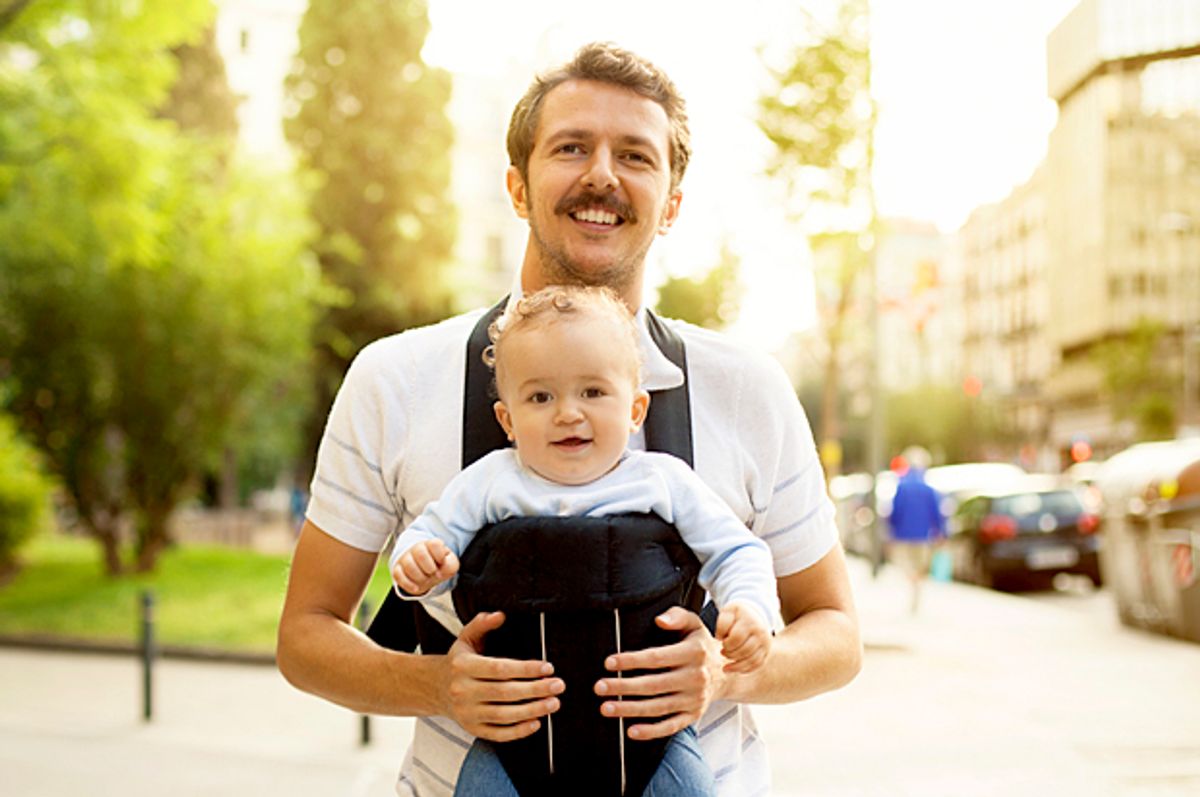As Father's Day approaches, it's fitting that we reflect on the impact of child care on families and children. Fathers may want to stay home and raise their children, but it's often not financially viable. A Pew Research Center study in the U.S. found that dads who work outside the home were just about as likely as moms to say they prefer to be home with their children (48 per cent of dads versus 52 per cent of moms).
Globally, paternity leave can increase fathers' involvement within families and this has benefits for the children, the co-parent, the father himself, the economy and society. When Québec initiated a father leave, 85.8 per cent of new fathers took the five-week leave, whereas within the rest of Canada, only 30 per cent of fathers participated in a shared parental leave.
Various factors influence how much mothers will work outside the home and among these are expectations of the father's work and role within the family. Fathers with more traditional views of being the primary provider will often work longer hours which may lead to conflict regarding family and work.
When mothers and fathers are co-parenting as a couple in a family, mothers are often more comfortable leaving the children and returning to work when the father is actively engaged with the children and she trusts the father as a partner and caregiver.
Parents have to decide what is best for their family. Affordable and accessible child care is central to a family's decision as to whether a parent will or will not work outside of the home.
More fathers staying home
Most fathers (90 per cent) indicate that parenting is their greatest joy. Fathers offer children unique and diverse experiences, and impact the child's long-term development.
There has been a shift within Canadian families, where more fathers are staying home with their children.
Being an involved dad makes men happier and healthier and contributes to future generations of family involvement and gender equality: daughters are more likely to have greater career aspirations and their sons are more likely to become good life partners when dads are involved in their young children's lives.
Gender equality refers to rights, responsibilities and opportunities which do not depend on the gender a person was born with whereas gender equity refers to the fairness of treatment for men and women according to their human needs. Changing the fabric of society to provide both gender equality and equity will allow our children to thrive.
The motherhood penalty
However, the role of being a primary caregiver in male-female parenting couples continues to largely reside with the mother for a number of reasons. A significant wage gap persists between men and women.
A Statistics Canada survey released in 2017 indicated women earn only 75 per cent of a man's income. This disparity increases when workers who aren't full-time are included — then women earn only 69 per cent of a man's income.
Also, women with children earn 12 - 20 per cent less than women without children. Globally, the wage gap becomes larger when men and women have children, with men's wages increasing and women's decreasing after the birth of their children. In countries where there are more egalitarian views towards child-rearing the wage gap is smaller.
There is a global phenomenon called the motherhood penalty. Researchers from Denmark, a country which ranks high on gender equality, have found that after the birth of the first child, women's earnings sharply dropped and never fully recovered.
This drop was not the case for men with children. This phenomenon exists within wealthy countries and highlights that, as long as mothers disproportionately carry the burden of work at home after having children, inequities in pay are likely to remain.
Early childhood educators: undervalued
Women in wealthy countries such as Canada tend to be over represented in low-paying jobs (48.9 per cent). Among the professions that receive the lowest wages and poorest working conditions are early childhood educators. Women represent 98.2 per cent of the early childhood industry's staff and directors. These educators continue to be undervalued.
Child-care centre staff earn only 69 per cent of the average wage for all occupations despite being part of a regulated profession. There would be a great benefit for children to experience both women and men in caring and early learning roles. But often, men — who tend to be socialized to consider themselves as primary breadwinners — cannot afford to work as early childhood educators.
Conversely, women are greatly under-represented in top-income jobs. Within the top one per cent of incomes, approximately 20 per cent of these top-earning positions are held by women.
World without men can't continue
Our children can't continue to grow up in a world where only women raise them, either at home or in early learning and care. Countries like Canada can support this needed change by providing quality universal child care while nurturing a more stable early childhood profession and intentionally creating a more gender-balanced early childhood workforce.
Through better wages and work conditions for all early childhood educators and mentoring for men entering the early childhood education profession, the world of early learning and care could become enriched as a whole and children would experience a greater diversity of caregivers.
At the same time, governments and society could gain economically by investing more in quality early learning and care: for every dollar invested, the return ranges from 1.5 to almost three dollars with the benefit ratio for children in lower socio-economic environments being higher. This investment would boost children's long-term developmental outcomes.
This Father's Day, we ask more fathers and men to speak up to participate in the global conversation to create a gender-equal world. Gender equity lifts everyone.
Nikki Martyn, Program Head of Early Childhood Studies, University of Guelph-Humber and Elena Merenda, Assistant Program Head of Early Childhood Studies, University of Guelph-Humber
This article is republished from The Conversation under a Creative Commons license. Read the original article.



Shares